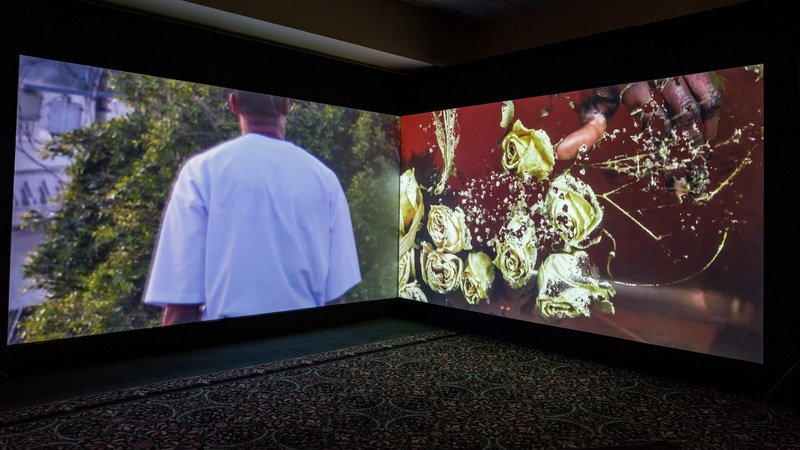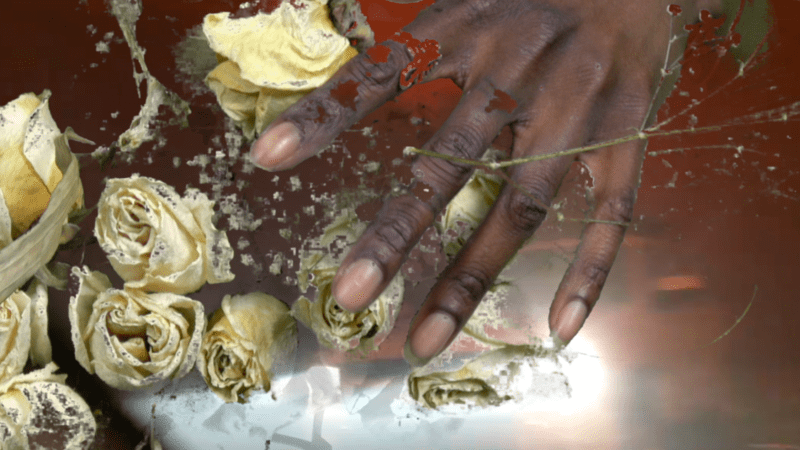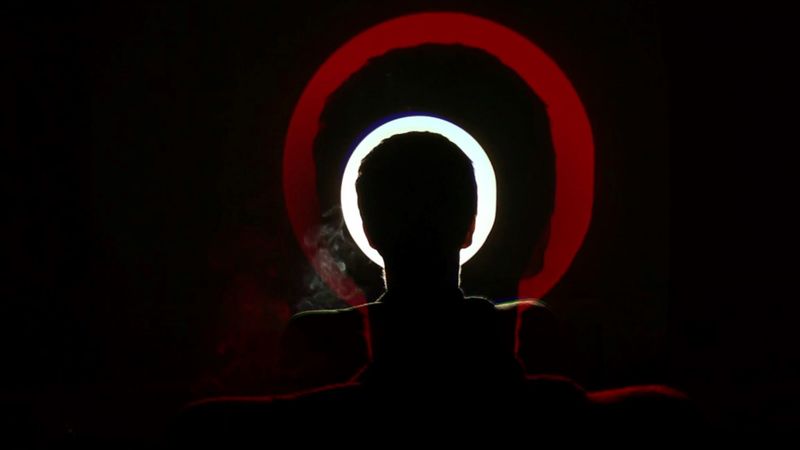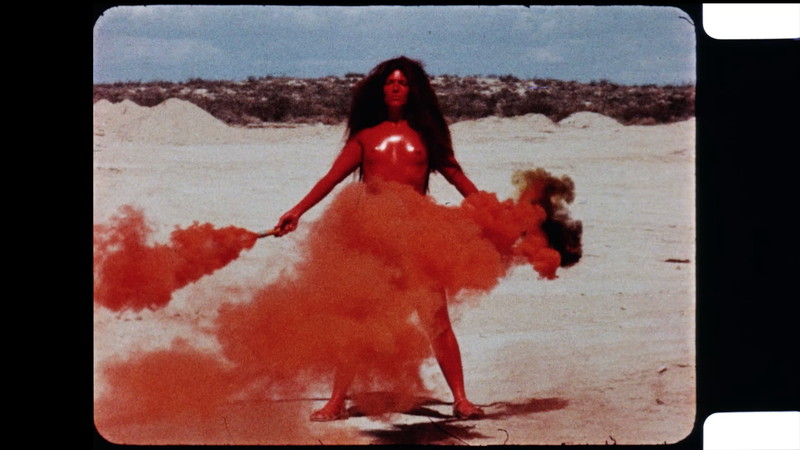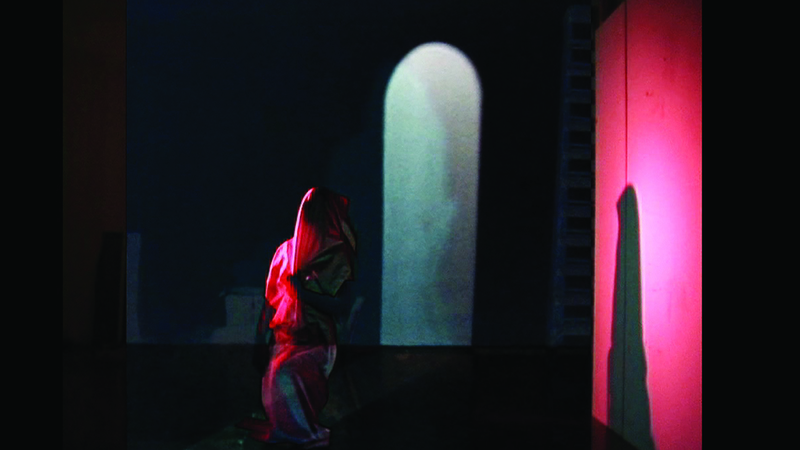EXPO VIDEO 2018
Curated by Anna Gritz
Portrait of a Tongue - Towards Non-Visibilty
EXPO VIDEO features a dynamic, curated screening program for film, video and new media works by artists represented by 2018 exhibitors. The 2018 program was curated by KW Institute for Contemporary Art Curator Anna Gritz, the program was presented within large-format screening rooms on the main floor of the exposition.
Program Statement
How to portray the senses, beyond sight? Our tongue lives in a cavernous and dark space, rarely visible. Touched by light only seldom when stretched out to its reach, or in expressions of shock or awe. A sluggish form really, heavily set muscular flesh, yet surprisingly agile and dexterous if need be. The tongue—reaches its full potential through creating speech, when not tasting food or memories— expressions that in turn have the potential to manifest into matter. Its tastes, touch, and alterations of sound points to the larger question of how we conceive of ourselves.
You may think you know interiority, but do you? As a porthole of sorts, our bodies are always both an architecture and a vehicle, a transitional space that changes its premise when employed. Nourishing an idea until it becomes pregnant with the weight of its potential manifestation, so strong, so commanding that it can overtake and devour anything prior. Resultantly, calling something by a name is a powerful thing. Utterance is the rhetoric of power, or the power of rhetoric.
Through the work of eight artists, the 2018 EXPO VIDEO program traces how we understand our senses as socially constructed as our bodies. The reward of visibility comes often with the mandate of only making that visible that was previously excluded—rendering visibility a trap. Towards Non-Visibility — Portrait of a Tongue links socially conditioned forms of partial sight with the drive of artistic practices towards obfuscation, paired with proposals for a dematerialized existence through performance and film.
Featured within a dedicated screening room, Kandis Williams’ two-channel video installation Eurydice (2018) takes the antique myth of Eurydice as a starting point to anchor the artist’s personal investigation into how Western visual imagination has shaped the construction of blackness and American culture. Together with the performers Josh Johnson, Cassandra Momah, Josh Miller, and Hardcore Tina, the artist develops choreographies for the camera that reflect upon Eurydice’s curse, wherein she is consigned permanently to the realm of the immaterial (the underworld) because Orpheus, the archetypal artist, cannot resist looking back at her. Understanding this immateriality as the flip side of an overt concept of physicality, Williams traces the entrapment of black bodies in a feedback loop of fetishization and erasure.
Reflecting directly on the relationship of our bodies to film in general, and its no longer indexical relationship to performance; the works within the program leave us with coded realities, instead of negative imprints. How might this process be able to speak to a desire for a disembodied form of physicality? As Judy Chicago states about her early Atmospheres, a performance from 1968, in which she would use smoke machines to cloak a Pasadena street in a blanket of ethereal white mist, “It softened everything…there was a moment when the smoke began to clear, but a haze lingered. And the whole world was feminized—if only for a moment.” This feminization may not be a ‘softening’ alone, but the potential for the blurring of outlines and definitions—for the clouding of the body.
Along the line of Williams and Chicago, other positions in the programme—amongst them Hannah Black, Kathleen White, and Ed Atkins—attempt to console the body as both a site of overt physicality and a place of its own obfuscation to escape the limiting options of representation that our socially conditioned sensorium leave us with. Somewhere between mysticism, media critique, and extreme empathy, their work petitions for a reimagining what it means to exist aside from having a body. The selection of films speaks to a misuse of the senses and of media alike as a way out to create a sensation in the viewer that allows for an experience that sits beyond a preconditioned canon. Doing so, Nicole Wermers points her camera at the ceiling of mundane spaces like shopping malls, while Adam Putnam creates spaces that opposed to what they may display rather speak to an interior state than a vision of exteriority. Moving image work is no longer limited as a medium for the display of images, but is instead used, as in the case of Tony Cokes, as a reading device that employs sound and text as a method for image making to express things that are better imaged in the imagination.
Finding our bodies in the images of others is a dangerous game—yet reimagining what it means to have a body a utopic undertaking. What renders us as visible or invisible in space? Why do some things appear more real with sharper outlines than others? Visibility is always based on selectivity. There is never just one body.
—Anna Gritz
Participating Artists
Screening Room 1
Kandis Williams
Eurydice, 2018
Night Gallery, Los Angeles
Screening Room 2
Ed Atkins
Delivery To The Following Recipient Failed Permanently, 2011
Gavin Brown's enterprise, New York, Rome
Hannah Black
My Bodies, 2014
Artist and writer based in New York
Judy Chicago
Women and Smoke, 1971
Jessica Silverman Gallery, San Francisco and Salon94, New York
Tony Cokes
6^, 2001
Video Data Bank at the School of the Art Institute of Chicago and Greene Naftali, New York
Adam Putnam
Reclaimed Empire, 2008–2017
Courtesy the Artist and P.P.O.W, New York
Nicole Wermers
Palisades, 1998
Jessica Silverman Gallery, San Francisco
Kathleen White
The Spark Between L And D, 1987
Martos Gallery, New York
About the Curator

At KW Institute for Contemporary Art in Berlin, Anna Gritz curated exhibitions by Paul Elliman, Nicholas Mangan, Margaret Honda and Lucy Skaer. In 2018 Gritz is working towards exhibitions with Ericka Beckmann, Judith Hopf, Lynn Hershman Leeson, Steve Bishop, Tamara Henderson and Sidsel Meineche Hansen. Previously she held curatorial positions at the South London Gallery (SLG), the Institute of Contemporary Arts (ICA) in London and the Hayward Gallery in London where she curated film, performance and exhibitions, and commissioned new works by artists including Juliette Blightman, Michael Smith, Bonnie Camplin, Kapwani Kiwanga, Jill Magid, Lis Rhodes as well as the group exhibitions Last Seen Entering the Biltmore (2014) and independently Duh – Art and Stupidity (co-curated with Paul Clinton) at Focal Point Gallery (2015). Gritz writes for catalogs and regularly contributes to a number of publications and magazines, such as Art Monthly, Art Agenda, frieze, Mousse and Cura. She served as a curatorial Attaché for the 20th Biennale of Sydney in 2016.
Anna Gritz follows past EXPO VIDEO curators Ali Subotnick (2017) | Independent Curator; Daria de Beauvais (2016) | Curator at Palais de Tokyo; Alfredo Cramerotti (2015) | Independent Curator and Director of MOSTYN (Wales, United Kingdom); Astria Suparak, (2014) | Artist and Independent Curator; and Dean Otto (2013) | Program Manager of the Film/Video Department at Minneapolis’ Walker Art Center.
